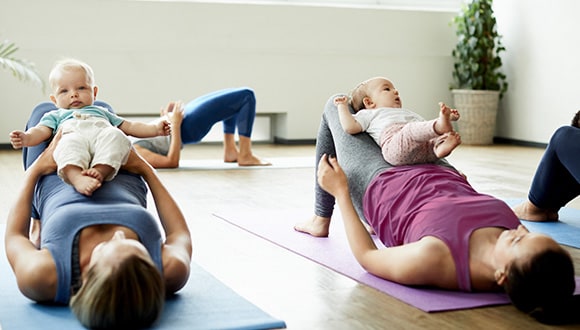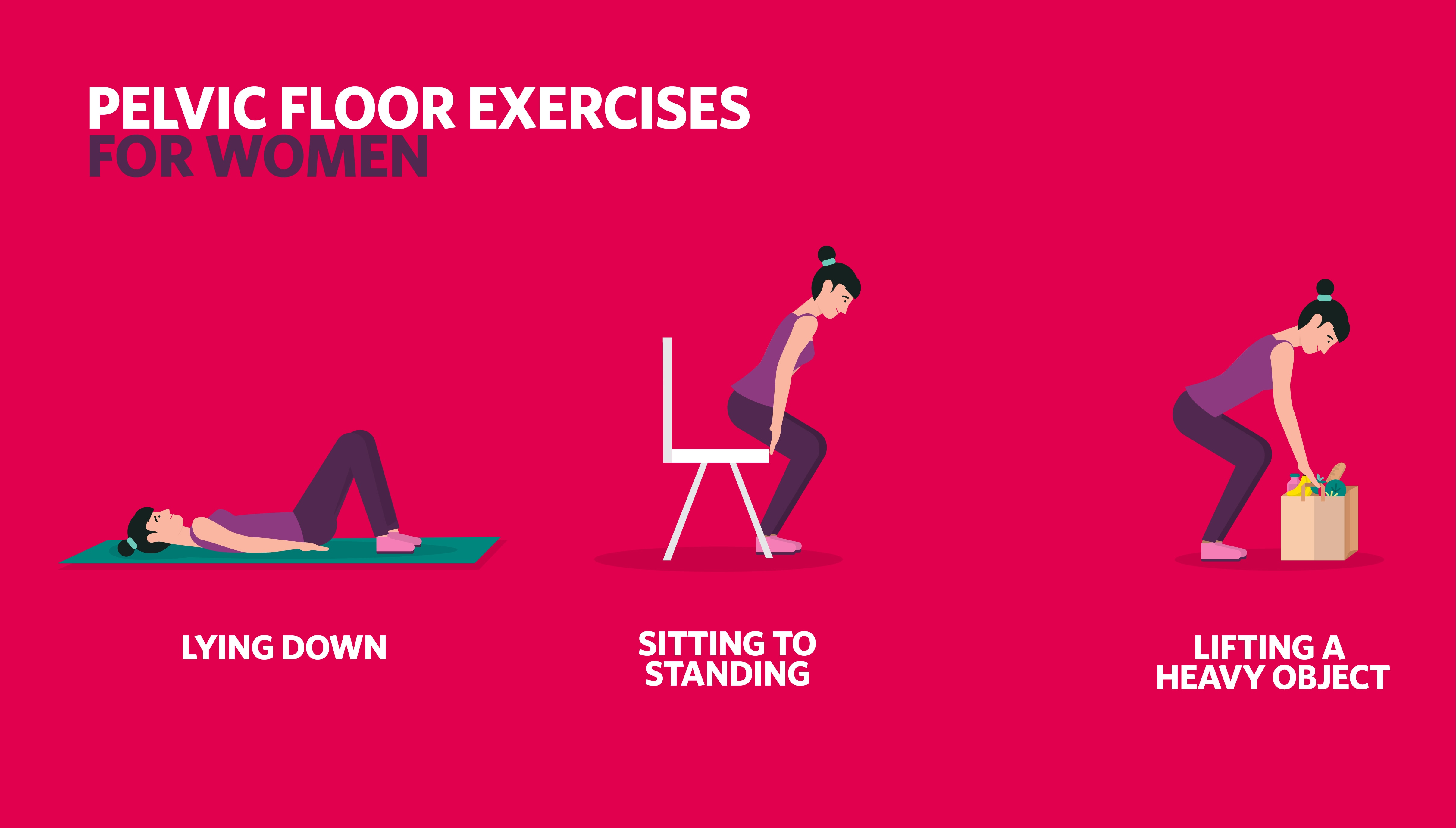Pelvic floor exercises for women: a step-by-step guide
Published February 2023 | 4 min read
Expert contributor Emma Godden, pelvic health physiotherapist, Australian Physiotherapy Association
Words by Angela Tufvesson
Whatever your age or stage of life, strong pelvic floor muscles are vital for women’s wellbeing. Here’s how to do pelvic floor exercises and get your technique right.
Even though you can’t see them, your pelvic floor muscles are often hard at work. Pelvic floor muscles help maintain control of the bladder and bowel, improve sexual function, and support the lower back and pelvis and they stretch from your pubic bone to your tailbone at the bottom of your spine. Making sure they’re as strong as possible is crucial to optimising a woman’s physical and mental health, as pelvic floor dysfunction (the inability to control the muscles of your pelvic floor) can cause emotional distress and affects your quality of life.
Knowing how to do pelvic floor exercises correctly – and making sure these all-important muscles are in good shape – can boost your physical health, sexual relationships, confidence and social life.
You might not consider your pelvic floor muscles until you start leaking urine when you sneeze, cough, exercise or lift something heavy. Bladder leakage is common – one in four Aussies are incontinent. The 2019 Continence Health in Australia report found incontinence has a higher prevalence in people with:
- arthritis (57%)
- mental health disorders (53%)
- disabilities (47%)
- diabetes (46%)
- women who have given birth (61%).
“The effects can be more than just physical and seep into other areas of your life,” says pelvic health physiotherapist Emma Godden from the Australian Physiotherapy Association.
“Incontinence can have long-term impacts on your physical health and emotional health. There are also social impacts. It can affect quality of life, your ability to participate in physical activity, your self-esteem, independence and even sex life.”
Like any muscle in the body, exercising your pelvic floor muscles throughout your life helps to prevent weakness, improve strength and boost mental health.

What are pelvic floor exercises?
Pelvic floor exercises – also known as ‘Kegel’ exercises, after Dr Arnold Kegel, who’s considered a pelvic floor exercise pioneer – strengthen your pelvic floor muscles in much the same way as squats strengthen your thighs and push-ups build upper-body strength.
Strong pelvic floor muscles help prevent urine from leaking and the accidental passing of faeces.
Keeping these muscles ‘fit’ also helps you avoid prolapse, which happens when the pelvic floor muscles weaken so much that they can no longer support the uterus.
While there are times in life when the pelvic floor is at greater risk of weakening, Emma says everyone can benefit from pelvic floor exercises.
“Incontinence doesn't just affect people who are pregnant or postnatal, or elderly people,” she says. “Even athletes or young people who've never had a baby can have incontinence. But there are things that can be done about it.”
Pelvic floor exercises in pregnancy
Pelvic floor exercises for women are especially important during pregnancy. According to the Continence Foundation of Australia, incontinence affects one in three women who’ve ever had a baby.
Emma says this is because of hormonal changes that affect the muscles and ligaments around the pelvic floor, as well as “the additional load on the pelvic floor from the weight of the baby, the placenta and the amniotic fluid”.
“Pregnancy is often the first time that people think about their pelvic floor muscles or the first time they seek help because it might be the first time that they get urinary incontinence,” she says.
Plus, Emma says, pelvic floor exercises are also linked with better birth outcomes. “The pelvic floor needs to be flexible enough to allow us to relax and to stretch during childbirth,” she says. “People who do pelvic floor exercises during pregnancy have a shorter pushing phase of labour and they have reduced severity of perineal tears.”
How to do pelvic floor exercises
It’s important to get your technique right before you start pelvic floor muscle training. Emma says an individual assessment with a pelvic health physiotherapist can help to make sure you’re performing the exercises correctly, “because its not an exercise that you can see as easily as a squat or bicep curl”.
There are two key parts to pelvic floor exercises: squeezing and relaxing. “The way to do a pelvic floor muscle contraction is to squeeze and lift as if you were trying to hold on to wee and wind,” says Emma, while at the same time making sure the muscles in your thighs, bottom and abdomen stay relaxed.
“Other cues that might be useful are tightening around the front, middle and back of the vagina, or people sometimes imagine picking up a blueberry into the vagina.”
Next, fully relax your pelvic floor muscles. “Think about openness,” says Emma. “You might like to picture a flower unfurling or a pebble dropping into a pond and the ripples coming out from around that pebble, or the sails of a ship billowing in the wind.”

How to do pelvic floor exercises: step-by-step
Emma gives a step-by-step guide to pelvic floor exercise.
Begin with the lying down pelvic floor exercises. When you’re feeling more confident, you can progress to doing the standing, sitting and lifting exercises.
Gradually build up to a six- to 10-second hold for each squeeze, relax and repeat eight to 12 times. Aim to do pelvic floor exercises at least twice a week.
- Lying down: Place your feet flat on the floor with your knees bent, or you might have your legs out straight with a pillow underneath your knees. “Choose somewhere that's really comfortable and where you can relax your thigh, buttock and abdominal muscles,” says Emma. Squeeze your pelvic floor muscles, hold and relax.
- Sitting to standing: Sit in a chair, squeeze your pelvic floor muscles and keep them engaged as you stand up. Hold for a second or two, then relax. Repeat in reverse: squeeze your pelvic floor muscles while you’re standing, sit down, hold for a second or two, then relax.
- Lifting a heavy object: Find something heavy that you can safely lift (things like bags of groceries, a large pot plant, a household object, even a basket of washing can work). Squeeze your pelvic floor muscles, lift the heavy object, hold as you straighten up, then relax.
RELATED ARTICLES
Pregnancy incontinence
What does pregnancy and postpartum incontinence involve and are you at risk?
What does a women’s health physio do?
Have you put incontinence or pelvic pain in the too-hard basket? A women’s health physio could help.
Prostate cancer treatment
If detected early, it can be effectively treated, with many options now available.